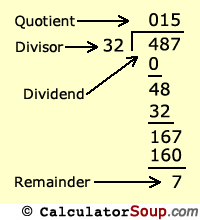Every year my math classes get to enjoy "The Great Pumpkin Caper." Oh.... they think we are going to do something like a pumpkin carving contest, or eat pumpkin seeds, or do some other non-mathematical activity with the pumpkin. Little do they know! Today was all about math!
To begin, each group gets a pumpkin, a piece of butcher paper, and a recording sheet entitled "The Great Pumpkin Caper." I explain that we are going to explore our pumpkin using math (at this point there are usually groans). I explain that we are going to begin by making a few predictions about the pumpkin and then we will work to find the actual answer to the questions.
The questions we are answering were:
- How many pounds does your pumpkin weigh?
- What is the circumference of your pumpkin in centimeters?
- How many lines does your pumpkin have around it?
- Will your pumpkin sink or float?
To find out how much a pumpkin weighs, we have to get a little creative. I have a scale, but it is difficult to get a precise measurement if you just sit the pumpkin on the scale. Instead, I have a volunteer stand on the scale (knowing we will learn their weight) and we determine the weight of the child. Then I ask the child to hold the pumpkin. We determine the new weight, and find the difference between the two weights. This is the weight of the pumpkin.
To find the circumference for the pumpkin, I have to do a little prep work with the kids. First, I ask them to define circumference (distance around a circular object). Then I ask them how they plan on finding the circumference of my pumpkin since my rulers don't bend (I do not offer tape measures). They problem solve and decide that we need string to go around the pumpkin, cut the string, and then use centimeter rulers to find the length of the string.
The most enjoyable part of the day is watching the kids' faces as we discover whether a pumpkin sinks or floats. Invariably, about 90% of my classes believe the pumpkin will sink.... it is heavy after all!. When they see that the pumpkin floats, no matter its weight, the look on their faces is priceless! (I would include pictures, but it would take away from the moment if I aim a camera at them!)
The greatest portion of the day is spent working with the seeds. I want the kids to make a REASONABLE estimate for the number of seeds in the pumpkin. So, I cut open the pumpkins and have them take out the seeds making a large pile (pulling off the pumpkin guts). Then I give each group a scoop (1 tbsp) and have them make piles of pumpkin seeds. When all of the seeds are in smaller piles, the kids count the seeds in one pile. Then they multiply this number by the number of piles. This gives them their REASONABLE estimate. Finally, they have to count all of the seeds in each pile. I have them keep track by writing the number of seeds in each pile with chalk beside the pile. Finally, they add their piles together. Hopefully, when they compare their estimate to their sum they find that they are fairly close.
At this point we are just about out of time. I have time enough for them to answer the following:
- Three things I discovered about my pumpkin.
- Two things I measured.
- I thing that surprised me and why.
Tomorrow we will put all three classes' data together and discuss our estimates.
HOMEWORK: xtramath.org
















